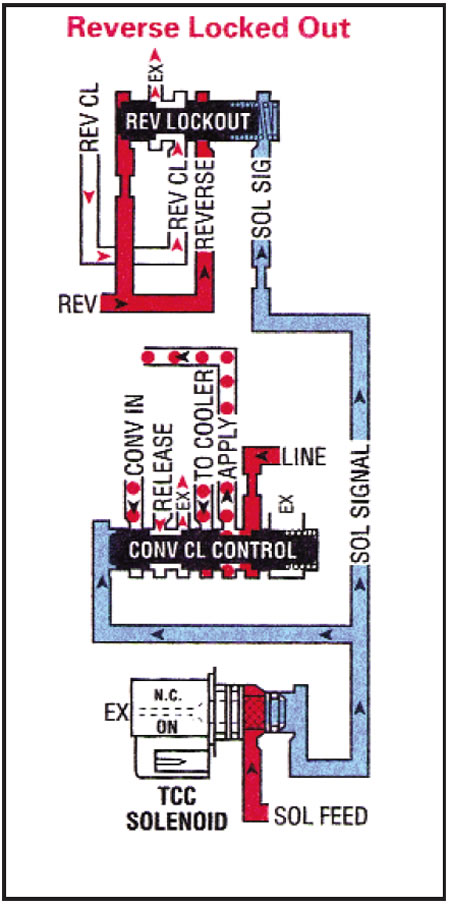
TASC Force Tips
- Author: Ed Lee, Deltrans
If any part of your sanity were ever in question, the 4L30 E transmission might be just the thing to put you over the edge. The most-common complaints concerning the 4L30 E usually have something to do with reverse. No reverse, little or no reverse, neutraling in reverse and partial TCC-lockup apply in reverse are only a few of the many problems.
A no-reverse condition may happen at any time, but the most-common time is immediately after overhaul. Several different auto manufacturers use this transmission, but none can seem to agree on what to do at the center-support housing and adapter case. The adapter case, the center-support housing and the spacer plate that separates them vary by manufacturer. None of these three components is interchangeable from manufacturer to manufacturer. Do not assume that the adapter case will interchange just because it has, or does not have, an electric connector. If it is a different manufacturer it will not interchange.

Also, just because both center supports have or don’t have a reverse-lockout valve, do not assume that they will interchange. They may vary by manufacturer. If you have a no-reverse condition and have interchanged any of these three parts, or the gaskets that separate them, that is a good place to start looking.
If the vehicle that you are working on comes in with little or no reverse and the transmission has not been apart, the reverse clutch is the place to start looking. You probably will have an audible leak when you air-check the clutch through the case. When you separate the center support from the rest of the transmission, remove the reverse-piston return springs and repeat the air check. You most likely will see a massive leak at the inner lathe-cut seal. The seal will look as if it shrank, but closer examination will reveal that the inner diameter (I.D.) is worn smooth. The surface against which the inner seal rides probably was not finished to the proper smoothness. Check the finish by running a pocket screwdriver up and down the surface at a 45° angle. If it feels like a phonograph record, you will need to dress this surface before reassembling the transmission.
If your customer complains of the transmission slipping or neutraling in reverse or feeling as though the TCC clutch starts to apply then neutrals in reverse when cold but working well when warm, this is another problem completely. Reverse oil has to stroke the reverse-lockout valve to allow the reverse-apply oil to continue to the reverse clutch (see illustration). Reverse oil opposes spring pressure only until the TCC solenoid opens, and then TCC-solenoid signal oil also is directed to the spring end of the valve. This action prevents the vehicle from going into reverse when the TCC clutch is applied. Unfortunately, if solenoid feed oil leaks into the solenoid signal circuit through the solenoid, neutraling in reverse will occur.
The orifice that delivers reverse oil to the reverse-lockout valve is only 0.028 inch in diameter. It would not hurt to increase this hole to about 0.060 in. for an extra margin of safety on really cold mornings, but this larger hole will not overcome a defective solenoid. When replacing the TCC solenoid, make sure you check to see that the screen is in the end of the solenoid. Most of the time when the solenoid is bad, the screen is missing. It is not clear whether the missing screen is the cause or the result of the bad solenoid, but you will want to retrieve the missing screen from the auxiliary valve body before it causes more problems.
A bad TCC solenoid causing reverse problems – don’t you just love it?
Next Month: Part II – the rest of the story.
The TASC Force (Technical Automotive Specialties Committee) is a group of recognized industry technical specialists, transmission rebuilders and Sonnax Industries Inc. technicians.














